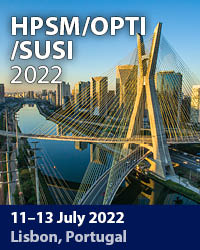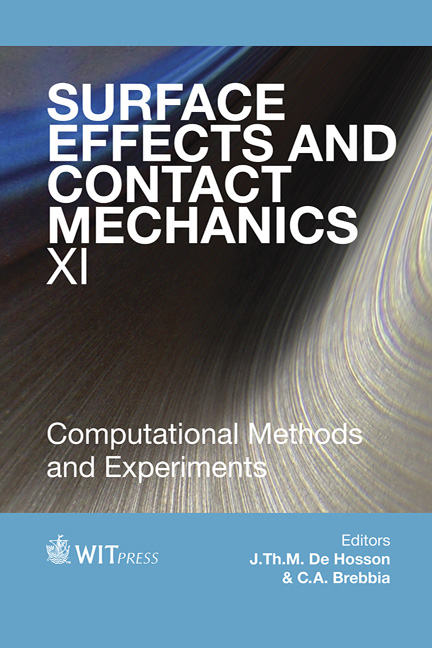Effect Of Interlayer Thickness On Fatigue Behavior In A5052 Aluminum Alloy With DLC/thermally Sprayed WC-12Co Hybrid Coatings
Price
Free (open access)
Transaction
Volume
78
Pages
10
Page Range
269 - 278
Published
2013
Size
1,570 kb
Paper DOI
10.2495/SECM130231
Copyright
WIT Press
Author(s)
Y. Uematsu, T. Kakiuchi, T. Teratani, Y. Kobayashi, Y. Harada & M. Takekawa
Abstract
Tungsten carbide with 12% cobalt (WC-12Co) was thermally sprayed by a high velocity oxygen fuel (HVOF) method on A5052 aluminum alloy as an interlayer with the thicknesses of 25, 70 and 120 m and subsequently diamond-like carbon (DLC) was deposited with the thickness of 15 m to fabricate DLC/WC- 12Co hybrid coating. Rotary bending fatigue tests were conducted using the specimens with DLC/WC-12Co hybrid coating and the thickness effect of interlayer on fatigue behavior was investigated. The fatigue strengths of the specimens with WC-12Co single layer were higher than those of the substrate. The fatigue strengths increased with increasing the thickness of WC-12Co layer. The specimens with hybrid coating exhibited higher fatigue strengths than the specimens with WC-12Co single layer when the thickness of WC-12Co layer was the same. The thinnest WC-12Co interlayer led to the mostly improved fatigue strengths by hybrid coating system. In the specimens with hybrid coating, DLC film could suppress the micro-cracking of WC-12Co interlayer, and thus the fatigue strengths were improved. When the interlayer became thicker, the effect of thin DLC film became weaker and resulted in the lower improvement of fatigue strengths. Keywords: fatigue, DLC, thermal spray, hybrid coating, crack initiation.
Keywords
Keywords: fatigue, DLC, thermal spray, hybrid coating, crack initiation.





